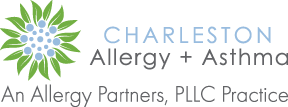There might not be a yellow coating on your car but fall still brings with it plenty of allergen exposure! Unlike the tree pollen of early spring, fall allergens can be more stealth with their arrival. Weeds will start pollinating as early as August and can pollinate through the first frost, which in Charleston can be as late as December depending on the year.
While weeds may be the main pollinator, there are other allergens to watch out for in the fall. Mold is an allergen that is present throughout the year. According to the American College of Allergy, Asthma and Immunology, mold spores can be released when the humidity is high, or the weather is dry and windy. One of the most concerning outdoor molds is Alternaria alternata. This is a mold that has been shown in research to trigger not only nasal allergy symptoms like congestion and sneezing, but also significant asthma symptoms. It is typically found growing in wet leaf piles. Raking leaves can be a fun outdoor family activity, but for allergy sufferers it can also mean heightened exposure to both pollen and mold that has collected in those piles.
While the presence of ragweed and outdoor mold might be leading you to think living indoors is best in the fall, think again. Indoor allergens like dust mite and indoor molds can also trigger symptoms. Dust mites are microscopic organisms that feed off of dead skin cells and moisture in the air. They are found in pillows, mattresses, carpeting and upholstered furniture. Over the warm and humid summer months, dust mite populations typically expand so they are at their peak as we enter the fall months. Therefore, many dust mite-allergic patients will have increased symptoms late summer through early fall. Running your air conditioner and even a dehumidifier to keep the humidity level less than 50% can help to control the dust mite population and reduce allergy symptoms.
For those patients with allergies, be sure to start daily allergy medications before the fall allergens arrive and continue the medications until the fall pollen has cleared. If you are unsure whether or not allergies are driving your symptoms, then it’s a great time to make an appointment with a board-certified allergist. Simple allergy skin testing can determine what specific allergies a patient has and results are available within 15 minutes the same day as your appointment. Your treatment plan will be created for you before you leave your appointment.




